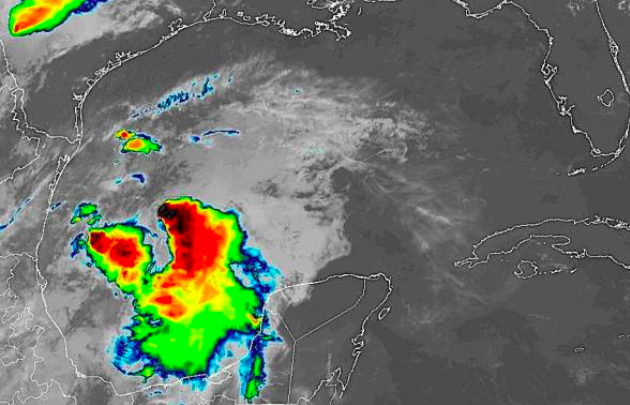
NOAA Satellite Image June 4, 2019
Hurricane Season in the Atlantic officially began last Saturday, and the National Oceanic and Atmospheric Administration (NOAA) is predicting a “near normal” year with nine to fifteen named storms, of which four to eight may strengthen to become hurricanes. Of those, two to four could be major hurricanes of Category 3 or higher. The Pacific hurricane forecast is calling for an above-normal season for both the eastern and central Pacific regions.
Why This Matters: Even one full-strength storm could have devastating impacts, such as Hurricanes Florence and Michael did last year. And before hurricane season began, we already saw the first named storm, and there is a second one brewing now in the Gulf of Mexico that could bring more heavy rains and flooding to the lower Mississippi River, which is already dangerously high, with large areas flooded. It could be a trifecta, according to the AccuWeather forecasters, with a surge of water moving downstream along the Mississippi River that could reach the lower part of the waterway at the same time as high levels of water from the Arkansas River join in, along with the heavy rainfall from the tropical disturbance late this week and this weekend. The two prior hurricane seasons were particularly destructive. According to The Washington Post, the 2018 hurricane season cost the nation $50 billion in damages and 2017 produced three of the five costliest hurricanes on record: Harvey, Maria, and Irma.
- Named storms have winds of 39 mph our higher, and they are called hurricanes once sustained winds reach 74 mph or higher.
- An average hurricane season produces 12 named storms, of which 6 become hurricanes, including 3 major hurricanes.
- The outlook on the number of storms has about a 70% chance of being right, according to NOAA’s Climate Prediction Center.
- In the eastern Pacific, NOAA predicts 15 to 22 named storms, of which 8 to 13 are expected to become hurricanes, including 4 to 8 major hurricanes.
- In the central Pacific, NOAA is calling for 5 to 8 tropical cyclones, which includes tropical depressions, tropical storms, and hurricanes.
Competing Trends Factor into the NOAA Outlook.
- An ongoing El Niño is expected to persist and would ordinarily suppress the intensity of the Atlantic hurricane season.
- However, countering the El Niño is the expected combination of warmer-than-average sea-surface temperatures in the tropical Atlantic Ocean and the Caribbean Seas, and an enhanced west African monsoon, both of which favor increased hurricane activity.
Getting An Upgrade: In years past, there has been much made of the American versus the European model when it comes to storm tracking and severity. This year, the National Weather Service is upgrading its Global Forecast System (GFS) weather model – often called the American model – early in the 2019 hurricane season — which is the first major upgrade to the model in almost 40 years, and will improve tropical cyclone track and intensity forecasts.
How To Prepare Now: Ask yourself these questions: Do you have cash on hand? Do you have adequate insurance, including flood insurance? Does your family have communication and evacuation plans? NOAA advises that you make sure to heed any warnings issued by local officials, and evacuate when the government says you should.
June 5, 2019 » Climate Prediction Center, damage, Flooding, forecast, hurricane, NOAA, outlook, rain, severe storms

